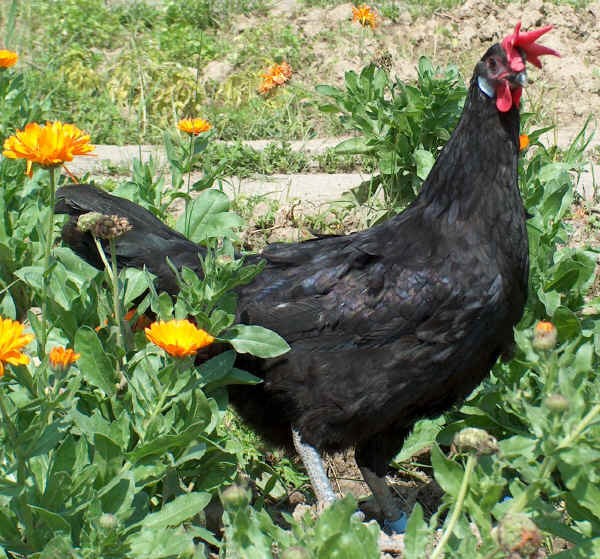Valdarno
Italian breeds of chickens - Breed with standard FIAV
Origin and main characteristics
The standard was done by Cav. Maggi, big breeder of the Valdarno, in 1905. The same year it was made official by the Italian Poultry Society, presided by Marchese Trevisan, during the National Congress in Mantova. Anyway the polemic went on among judges, breeders and experts even after 1905. The publishing house Battiato, in 1914, published the book “Poultry scattered pages”, in honour of Teodoro Pascal. A chapter of the book is titled “Minestrone alla Valdarno”, where articles and letters about the discussion are collected. While the polemic went on, the breed died out few years later.
Since few years, an enthusiast breeder, Fabrizio Focardi, is doing a big effort to recover the breed.
After long researches, he decided to start from chickens with characteristics similar to the Valdarno. Starting from the crossbreeding among Bresse chickens, Castigliana chickens and autochthonous chickens found in a farm owned by Gabriele Fantocchi in Siena county, Focardi was able to show the Valdarno in occasion of Italian Championship of Reggio Emilia, in 1998. Those animals have been judged as VERY GOOD (three hens) and GOOD (the cock).
The Italian Official Standard has been done fallowing the one accepted in 1905 by F.I.A.V.. Nowadays, they are discussing about the opportunity to modify that standard according to paintings and pictures of the time.
The breed is Tuscan. Contrary to what they think in Tuscany, the Valdarno is black, with slate-grey shanks and white skin; the confusion comes from the Valdarnese, which is white with white shanks and skin. The Valdarnese is an hybrid, born in 1950’s, appreciate by Prof. Quilici, but it never obtained an official standard so that it was never really selected.
The Valdarno is better than the Valdarnese both for the quality of meat and for the production of eggs. The Valdarno is just as good as the French Bresse, which is very similar. The Bresse has been made valuable obtaining the DOP (Protected Designation of Origin). According to some authors, when the Bresse disappeared in French countryside, the exportation of the Valdarno increased a lot, helping the surviving of the breed.
The Valdarno is a very rustic and strong chicken, excellent for outdoor breeding. Very precocious both in feathering and in growth. The hens produce eggs (white shell) since 5th month.
At the beginning of XX century it was the most common chicken in Tuscany, particularly famous for the high quality of the meat. This breed can’t live in cold regions, where the comb can frequently frostbite.
During 2002-2005 started a project for the rescue of two traditional Tuscan breeds, the Valdarno and the Black Livornese. This project, called “Gallo Nero”; (link: Progetto “Gallo Nero”), was done in the Agricultural High School of Florence, with the contribution of the Traditional Classic Chianti Association. The scientific supervisor of the work was Prof. Mario Giannone, teacher of zootechnics at the Agricultural High School. Also Fabrizio Focardi contributed.
The Valdarno is officially recognized in Italy.
(1999 - Fabrizio Focardi - FIAV)
Morphology
The livery is shining black, with strong petroleum shades: the tips of flights must not have purple or whitish shades.
The down must be dark, from slate-grey to black.
The shanks are slate-grey, shorter than in the Livorno. The tail is erect (65-70 in the cock), the abdomen is well developed in the hen, which is an excellent layer. The tail, not very rich in main tail feathers, is erect.
The head is well shaped, with comb and wattles more developed than in the Livorno. The comb, with 4-6 points, follows the line of the nape without touching it. The wattles are smooth, not opened, without any vertical or horizontal fold.
The eyes are lively, from red to brown. The beak is black, the ear lobes have no red shades.
Mean weight:
- Cock: 2.5-2.8 kg
- Hen: 2.0-2.3 kg
Valdarno cock (photo www.agraria.org)
 Valdarno hen (photo www.agraria.org)
Valdarno hen (photo www.agraria.org)

